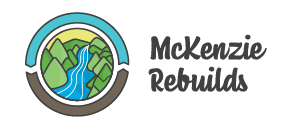Wildfire dramatically changes the landscape and increases the risk of landslides, debris flow and flooding.
Large-scale wildfires dramatically alter the terrain and ground conditions. Normally, vegetation absorbs rainfall, reducing runoff. However, wildfires leave the ground charred, barren, and unable to absorb water, creating conditions ripe for flash flooding and mudflow.
Flood risk remains significantly higher until vegetation is restored—up to 5 years after a wildfire. Flooding after a fire is often more severe, as debris and ash left from the fire can form mudflows. As rainwater moves across charred and denuded ground, it can also pick up soil and sediment and carry it in a stream of floodwaters. This can cause more significant damage.
Residents and business owners are urged to purchase flood insurance now to assure financial protection from flooding.
When a wildfire burns a portion of a watershed, the resulting burn scar increases the potential for flooding until vegetation is re-established. The U.S. Army Corps of Engineers has information and resources for residents.
Wildfires increase the risk of landslides and debris flow. Find out if your property is considered at high risk.
The Holiday Farm Fire Erosion Threat Assessment/Reduction Team (ETART) Report, provides a detailed look at areas within the fire perimeter that are more at risk of flooding, landslides, and debris flow.
